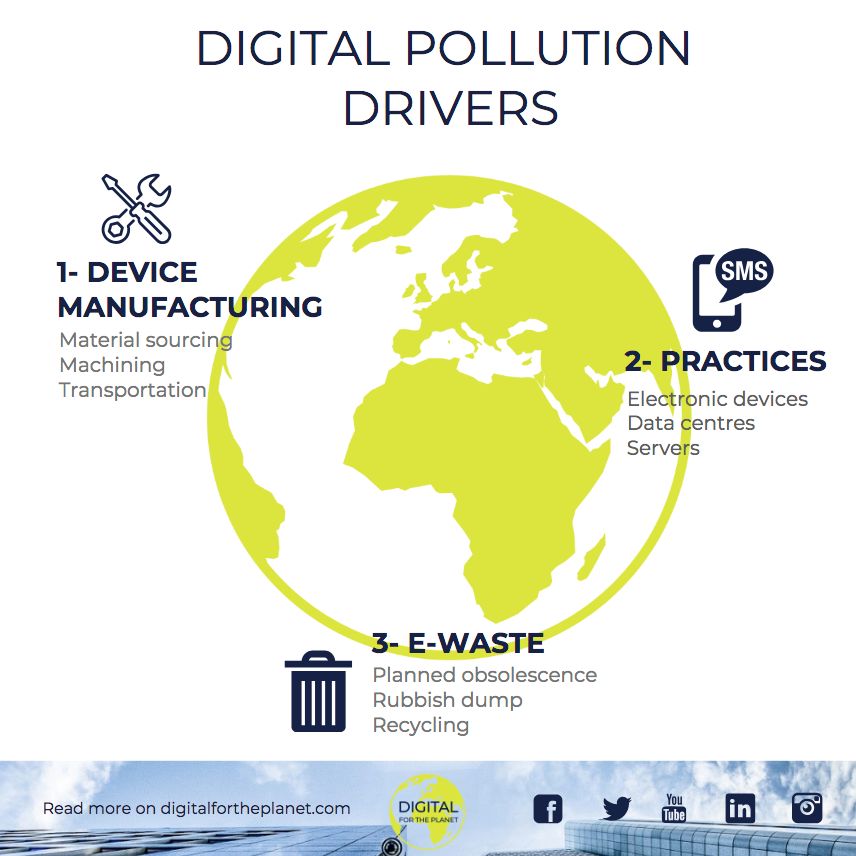Solution For Digital Pollution?
May 21, 2019 • 32 views
Digital pollution is a big contributor to climate change and not a single person on the planet is not contributing to it. One of the main forms of digital pollution is called 'dormant pollution' that is it is due to the storage of emails. All emails stored in a mailbox make many servers run uninterruptedly in data centres.
According to the research studies it is revealed that to send 1MegaByte(MB) of e-mail it takes around 25 watts per hour which represent 20 grams of carbon dioxide emissions.
The research centre has estimated that 293 billion emails will be sent every single day this year and the power will be mostly generated from fossil fuels.
The share of greenhouse gas emissions from information and communication technologies (ICT) will rise from 2.5% in 2013 to 4% in 2020.

That makes the sector more carbon-intensive than civil aviation (a 2% share of emissions in 2018) and on track to reach automobiles (8%).
Further, mobile apps can quickly drain and shorten the life of phone batteries. Then there are the server farms which require huge amounts of electricity both to run and to power air-conditioning which keeps the equipment from getting too hot.
The surge in image downloading, Video streaming services also pose a challenge.
In 2017, Greenpeace estimated that the viral K-pop sensation Gangnam Style, viewed more than 2.7 billion times, had consumed a year’s worth of production from a small nuclear power plant.
Thus technology is often used as a solution to the world environmental challenges but it is also creating a problem and impacting environment by increasing global warming nowadays. As the world is looking for solutions and confused a lot about how to solve it.
What can be the solution of Digital Pollution?
The daily action is a great contributor to reduce the impacts of digital pollution on our environment. Therefore, adopt these actions in order to help environment clean from digital pollution:
Clean your inbox and unsubscribe from polluting newsletters that you don’t read.
Limit receivers copied in your emails.
Stop useless queries when searching via search engine. You can directly access required website by saving them in your favourites, instead.
Use URL bar. By using accurate key words, you can help reduce internet’s CO2 emissions by 5kg per year.
Send lighter emails– for big data, you can use USB drivers or external hard drives.
Limit usage of Cloud to maximum
Prioritize television over streaming because online videos represent more than 60 per cent of traffic and watching an HD streaming emits as much CO2 as manufacturing, transporting, and playing a DVD.
Learn and recognise your labels. You can contribute to decreasing digital pollution by buying less polluting informatics material which favours energy savings.
